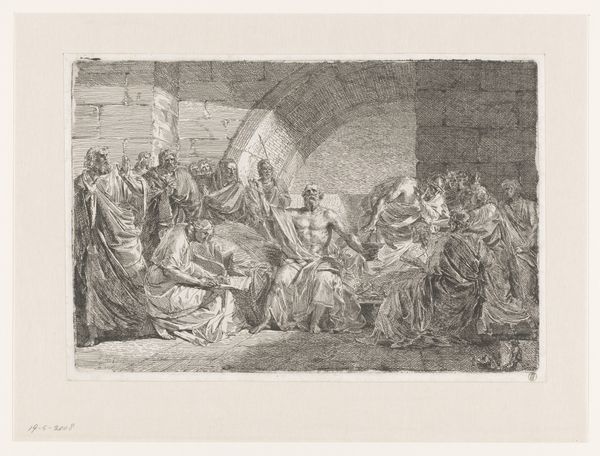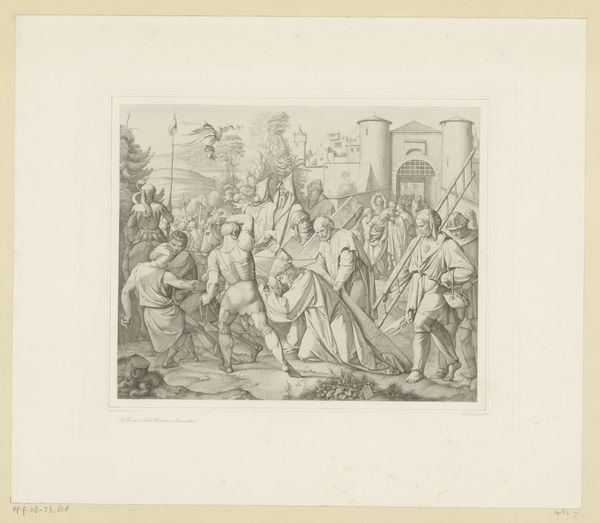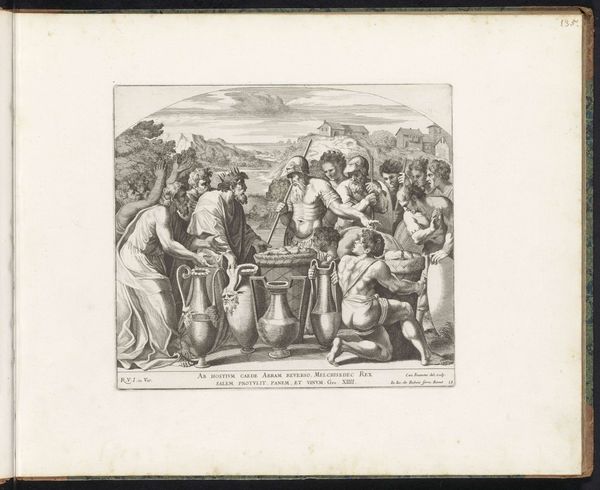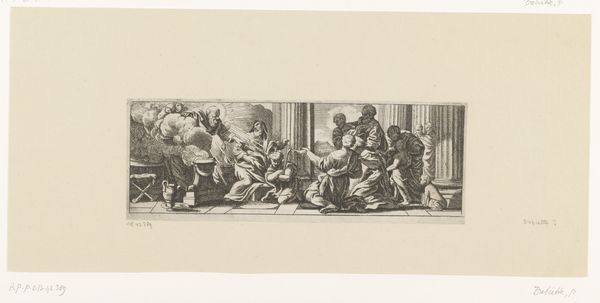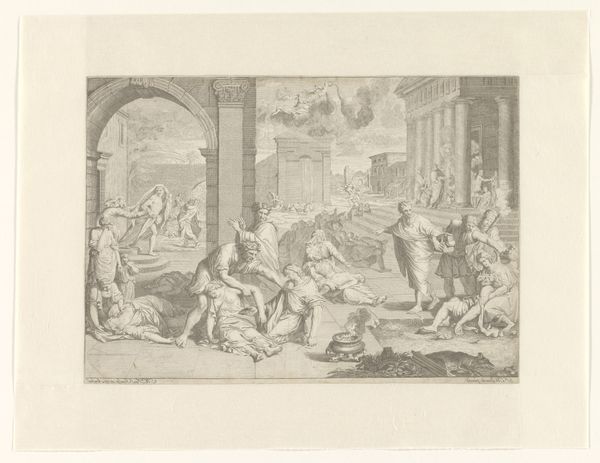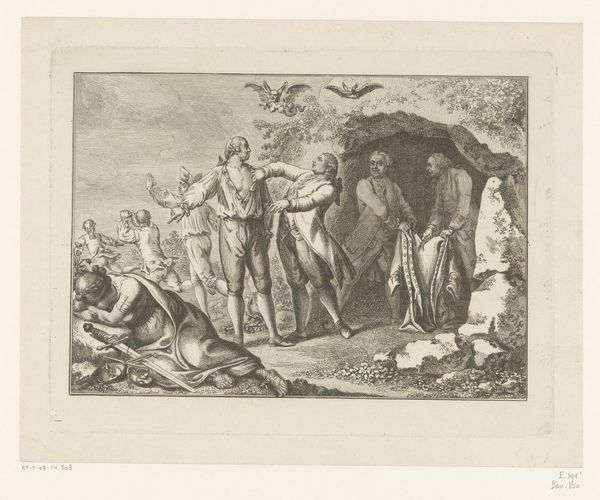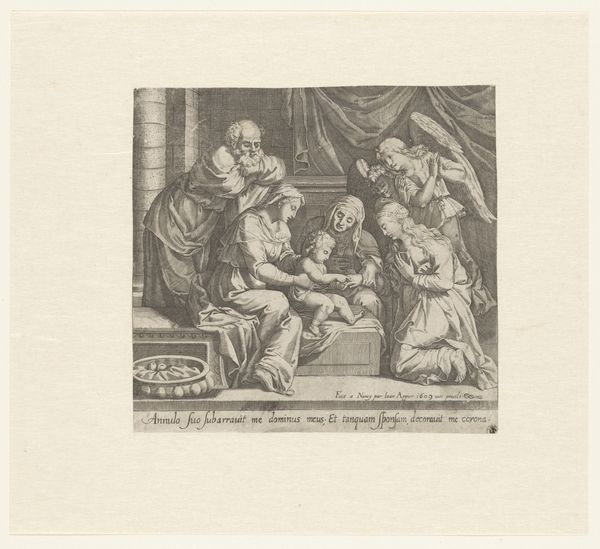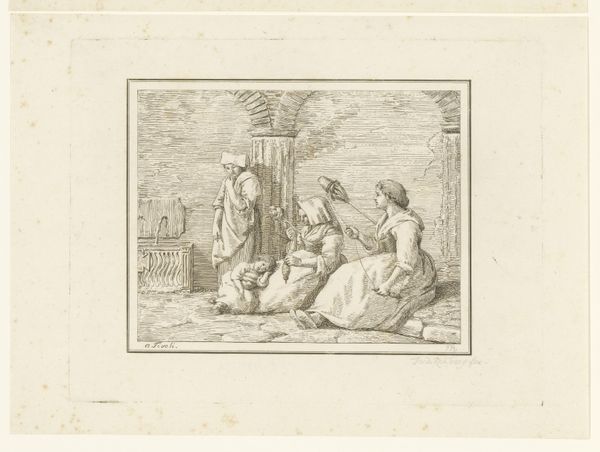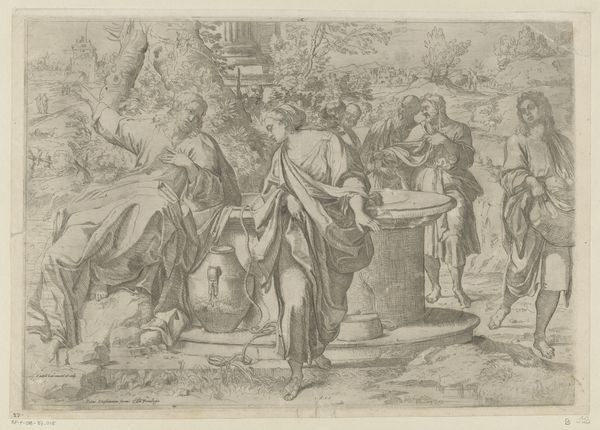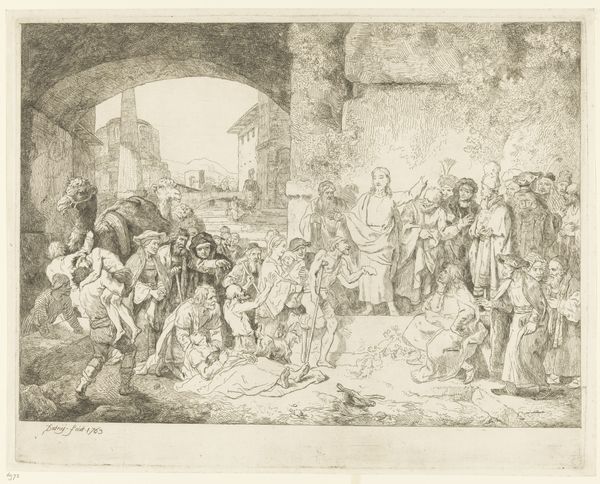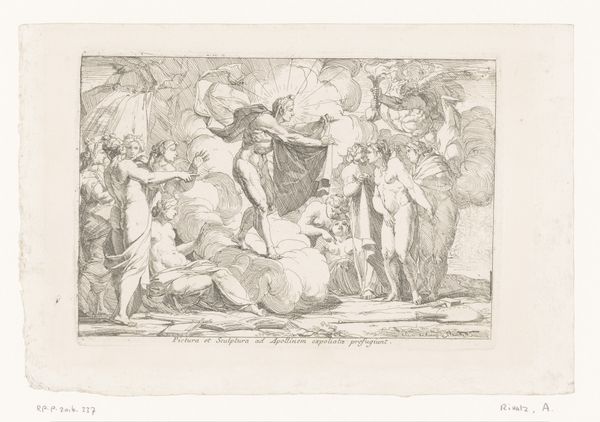
drawing, print, etching, paper, ink
#
drawing
#
neoclacissism
#
ink paper printed
# print
#
etching
#
figuration
#
paper
#
ink
#
history-painting
#
academic-art
#
realism
Dimensions: height 177 mm, width 248 mm
Copyright: Rijks Museum: Open Domain
Curator: Christian Bernhard Rode’s etching, dating from around 1770, depicts "Paulus beroept zich op het Romeins burgerrecht," or "Paul appeals to his Roman citizenship." It’s a powerfully rendered historical scene. Editor: It’s the staging that first strikes me. The figures are arranged almost as in a classical frieze, and the whole scene seems very static and formal despite the drama implied by the narrative. The process really highlights the social decorum embedded in the scene itself. Curator: Absolutely. The artist is working in a Neoclassical style, so this sense of order and clarity is quite deliberate. He uses line work meticulously, a very considered application, to tell a specific story. The narrative centres around the Apostle Paul, appealing to Roman law to protect himself against unlawful punishment, an act that speaks volumes about Roman power and the complicated relationship between early Christians and the Empire. Editor: That contrast interests me. We see paper, a relatively fragile material, being used to portray this solid assertion of Roman power. Etching would have allowed for multiple copies and distribution, democratizing the image, making Roman authority reproducible. The act of dissemination itself changes the understanding of "power". Curator: Precisely! It puts questions of identity and justice right at the forefront. Consider that Paul, as a Jew, initially persecuted Christians before converting. Now, as a Roman citizen, he demands protection under Roman law. This print opens the door for us to discuss legal agency, but also how it operates within social hierarchies of its time, a context of political upheaval. Editor: Thinking about the social hierarchies involved in the labor of producing prints— the artist, the printmaker, the distributor — that echoes the power dynamics depicted in the image. The material of the print embodies a story of craft, labor, and cultural capital. Curator: That’s a great point. The artist's own position matters too, of course. He was part of a specific artistic milieu, with its own power structures and academic requirements. I’m really compelled by the dialogue this etching opens between history, identity, and social action. Editor: And seeing how these elements combine on a single sheet of paper truly underlines art's own ability to both represent and shape the power structures of the time. It leaves me with a fresh perspective on art production.
Comments
No comments
Be the first to comment and join the conversation on the ultimate creative platform.
